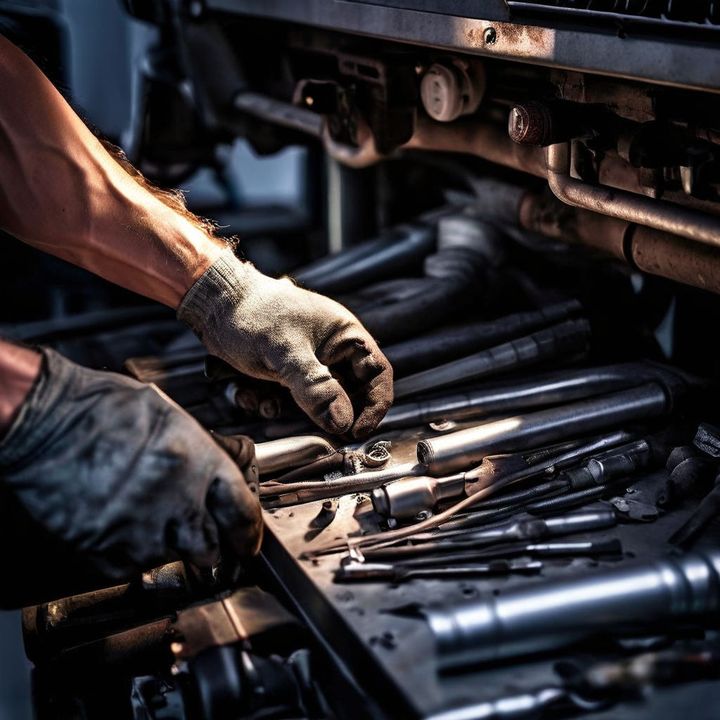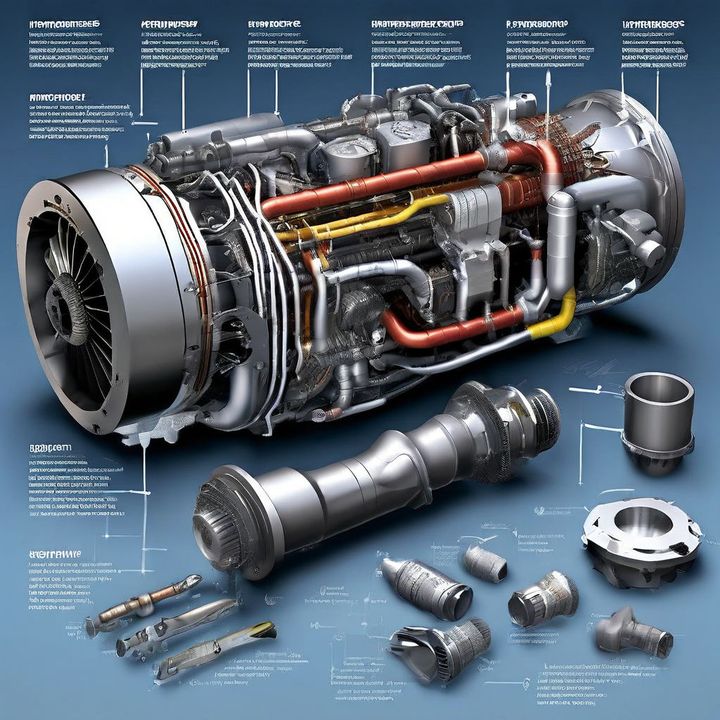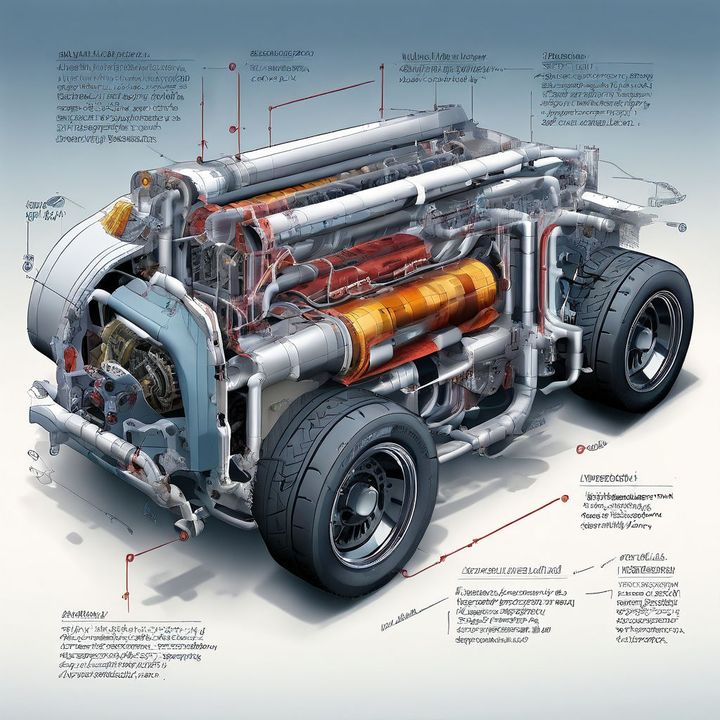


Mufflers are a crucial component of a vehicle's exhaust system, responsible for reducing the noise generated by the engine. Their primary function is to muffle or dampen the loud and disruptive sounds produced by the rapid combustion of fuel and the subsequent expulsion of exhaust gases.

One of the most prevalent issues I encounter is rust and corrosion leading to holes or leaks in the muffler or resonator. These components are exposed to moisture, road salt, and corrosive exhaust gases, which can cause them to rust from the outside in and the inside out over time. As the metal corrodes, holes form, allowing exhaust gases and noise to escape, resulting in a loud, rumbling exhaust sound and potential performance issues.
Table 1: Common Signs of Rust and Corrosion
| Sign | Description |
|---|---|
| Loud exhaust noise | Holes or leaks in the muffler or resonator can cause a loud, rumbling exhaust sound. |
| Exhaust smell inside the cabin | Leaks can allow exhaust fumes to enter the vehicle's cabin. |
| Reduced performance | Holes or leaks can affect the exhaust system's efficiency, leading to reduced engine performance. |
The muffler and resonator are held in place by hangers and clamps, which are designed to keep them securely mounted to the exhaust system. However, these components can become loose, broken, or worn out over time, causing excessive vibration and movement. This can lead to damage or even separation from the exhaust system, resulting in rattling noises and potential safety hazards.
Table 2: Signs of Loose or Broken Hangers/Clamps
| Sign | Description |
|---|---|
| Rattling noises | Loose or broken hangers/clamps can cause rattling noises as the components vibrate excessively. |
| Exhaust components hanging low | Broken hangers/clamps can cause the muffler or resonator to hang lower than usual. |
Hitting a pothole, speed bump, or other object on the road can cause impact damage to the muffler or resonator, resulting in dents or deformation. This type of damage can affect their ability to function properly, leading to exhaust leaks, noise issues, and reduced performance.
Inside the muffler and resonator, there are baffles and sound-dampening materials designed to muffle the exhaust noise. Over time, these internal components can break down due to the extreme heat and vibration they're exposed to, reducing their effectiveness and causing rattling noises or decreased performance.

When a customer brings their vehicle to the shop with suspected muffler or resonator issues, I follow a systematic inspection and diagnosis process to identify the root cause.
Visual Inspection: I start by visually inspecting the muffler and resonator, looking for signs of rust, holes, dents, or loose or broken hangers/clamps.
Listen for Exhaust Noises: With the engine running, I carefully listen for any loud rumbling, rattling, or hissing noises that could indicate a problem with the exhaust system.
Check for Exhaust Leaks: Using a smoke machine or soapy water, I check for any exhaust leaks around the muffler, resonator, and exhaust pipe connections.
Check Backpressure: In some cases, I may use a backpressure gauge to check for excessive backpressure, which could indicate a blockage or restriction in the exhaust system.
Once the issue has been diagnosed, the repair process can begin. Here are the typical repair instructions for common muffler and resonator problems:
If there are holes or leaks in the muffler or resonator, the affected component will need to be replaced. This involves unbolting or cutting out the old component and welding in a new one. It's essential to ensure proper alignment and sealing to prevent future leaks.
For loose or broken hangers or clamps, the repair involves replacing the faulty components with new ones, ensuring proper alignment and support for the muffler and resonator.
In cases of minor impact damage, it may be possible to straighten or repair the component. However, if the damage is severe, replacement is usually recommended to ensure proper function and prevent further issues.
When the internal baffles or sound-dampening materials have broken down, replacement of the affected component is typically required, as there's no effective way to repair the internal components.
When working on mufflers and resonators, it's essential to follow proper safety precautions:
Work in a well-ventilated area and allow components to cool before handling to avoid burns.
Use proper lifting and support when working under the vehicle to prevent injuries.
Consider upgrading to performance mufflers or resonators for improved sound and exhaust flow, especially if you're an enthusiast or frequently tow or haul heavy loads.
While muffler and resonator problems are sometimes unavoidable, there are steps you can take to help prevent or delay their recurrence:
Regular Inspections and Maintenance: Catching issues early through regular inspections and maintenance can help prevent minor problems from escalating into major ones.
Avoid Impact Damage: Be cautious when driving over large potholes or obstacles that could cause impact damage to the exhaust system.
Rust-Proofing and Undercoating: Applying rust-proofing or undercoating can help protect against corrosion, extending the life of your muffler and resonator.
Proper Installation and Alignment: Ensuring proper installation and alignment of the exhaust components can prevent excessive vibration and movement, reducing the risk of damage or separation.
The cost of repairing or replacing mufflers and resonators can vary depending on several factors, including the specific issue, vehicle make and model, and labor rates in your area. Generally, you can expect the following cost ranges:
Table 3: Estimated Repair Costs
| Repair | Cost Range |
|---|---|
| Muffler Replacement | $100 - $300 for parts, plus labor |
| Resonator Replacement | $50 - $200 for parts, plus labor |
| Hanger/Clamp Replacement | $20 - $100 for parts, plus labor |
| Professional Inspection | $50 - $100 |
It's always recommended to get multiple quotes from reputable repair shops to ensure you're getting a fair and accurate estimate based on your specific situation.
Muffler and resonator problems are common occurrences in the automotive world, but with proper understanding, diagnosis, and maintenance, you can minimize their impact and keep your vehicle running smoothly. As a mechanic, I've seen firsthand the importance of addressing these issues promptly and correctly to ensure your safety, comfort, and vehicle's longevity. By following the tips and guidelines outlined in this article, you can stay ahead of potential problems and enjoy a quieter, more efficient ride.
Mufflers and resonators can rust from the outside due to exposure to moisture, road salt, and corrosive exhaust gases. They can also rust from the inside due to corrosive exhaust byproducts and extreme temperature changes.
Loose or broken hangers/clamps can cause excessive vibration and movement of the muffler and resonator, leading to potential damage or separation from the exhaust system.
Impact damage refers to dents or deformation caused by hitting potholes, speed bumps, or other objects on the road, affecting the ability of mufflers and resonators to function properly.
The internal baffles and sound-dampening materials inside mufflers and resonators can break down due to extreme heat and vibration exposure over time, reducing their effectiveness.
Mechanics visually inspect for signs of rust, holes, dents, or loose/broken hangers/clamps, listen for exhaust noises, check for leaks using smoke or soapy water, and may use a backpressure gauge.
Holes or leaks require replacing the affected component by unbolting or cutting out the old one and welding in a new one, ensuring proper alignment and sealing.
Loose or broken hangers/clamps are repaired by replacing the faulty components with new ones, ensuring proper alignment and support for the muffler and resonator.
Minor impact damage may be repairable by straightening or repairing the component, but severe damage usually requires replacement to ensure proper function.
When the internal baffles or sound-dampening materials have broken down, replacement of the affected component is typically required, as there's no effective way to repair the internal components.
Work in a well-ventilated area, allow components to cool before handling, use proper lifting and support when working under the vehicle, and consider upgrading to performance mufflers or resonators for improved sound and exhaust flow.

Sarah isn't your average gearhead. With a double major in Mechanical Engineering and Automotive Technology, she dived straight into the world of car repair. After 15 years of turning wrenches at dealerships and independent shops, Sarah joined MICDOT to share her expertise and passion for making cars run like new. Her in-depth knowledge and knack for explaining complex issues in simple terms make her a valuable asset to our team.












